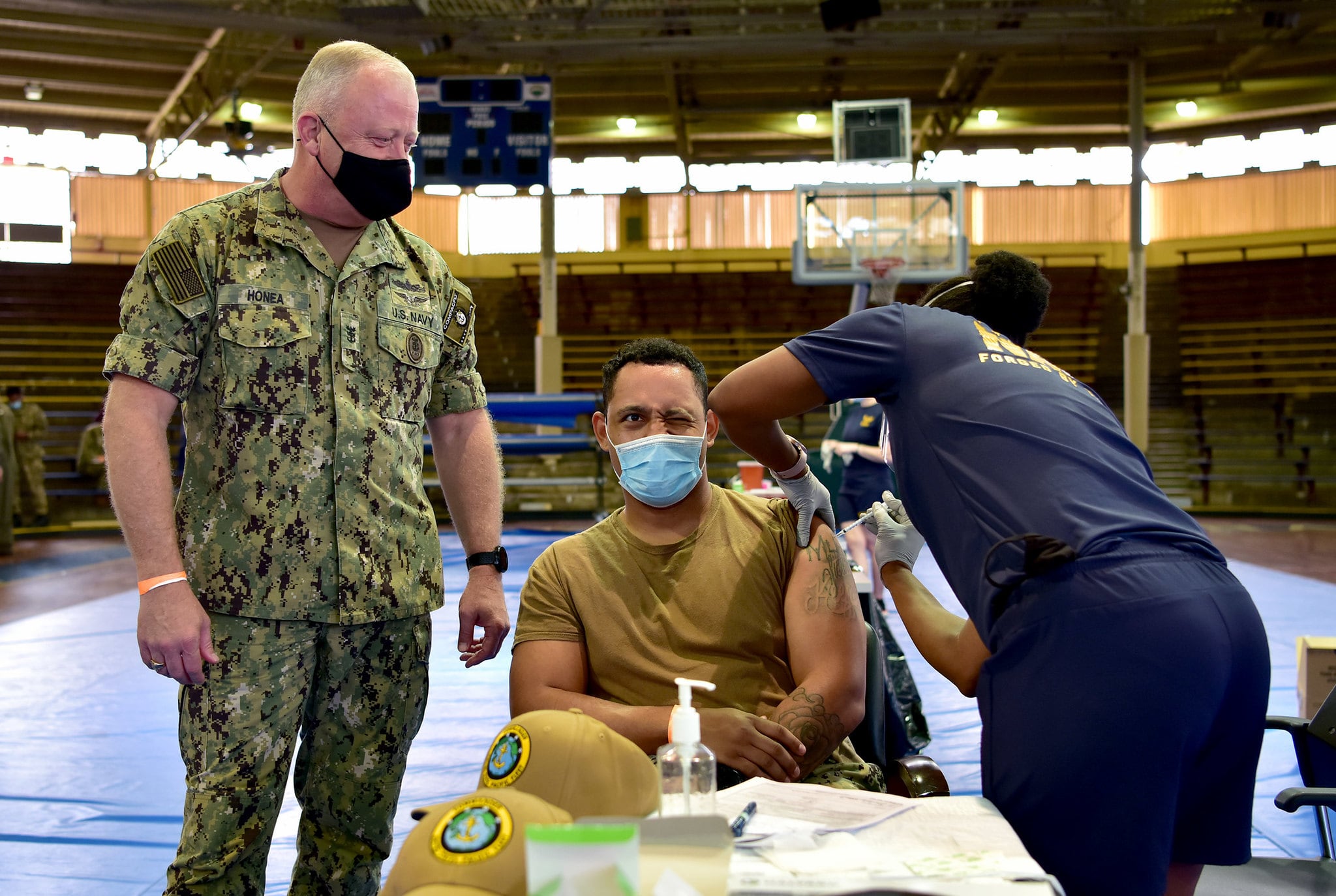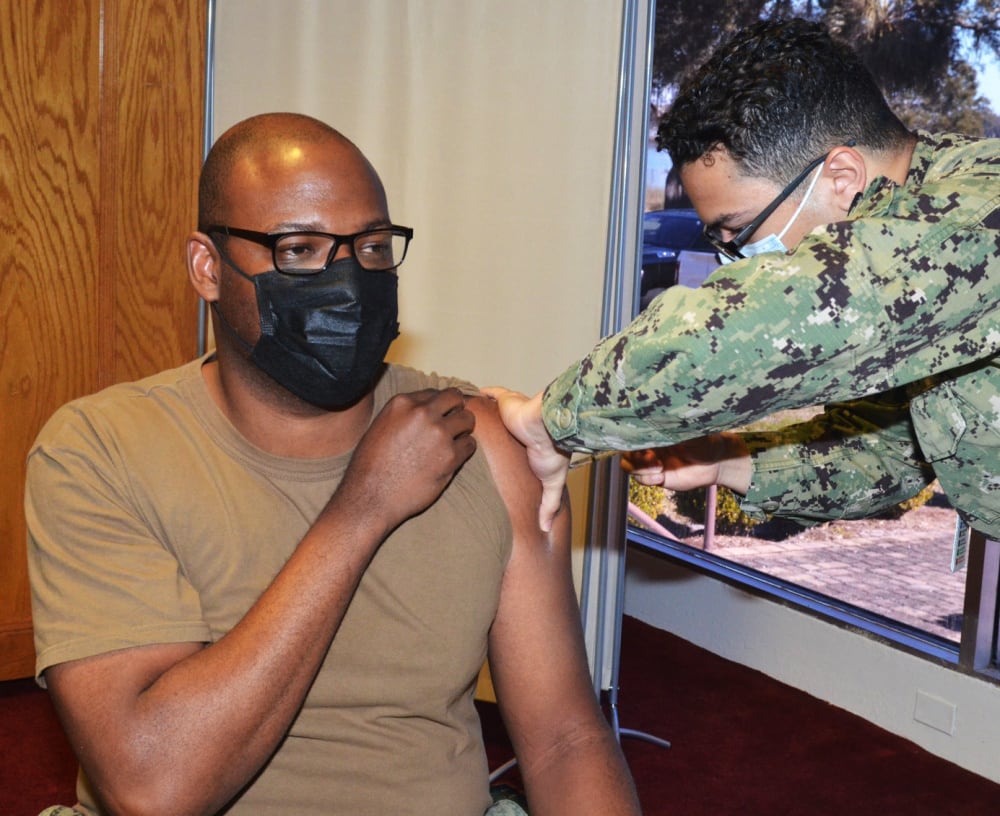Nearly a quarter of the Navy’s active-duty fleet has received one or two shots of the COVID-19 vaccines, officials said Friday.
Roughly 10 percent of sailors, about 35,000, have gotten their first jab, while another 13 percent have received both shots, Rear Adm. Karl Thomas, the assistant deputy chief of naval operations for operations, plans and strategy, told reporters.
The news comes as the Navy and other services work to educate the ranks that the science behind the Pfizer and Moderna vaccines is sound, and that the shots are safe and effective in protecting themselves, their shipmates and their loved ones.
Because the federal government has authorized both vaccines under an emergency-use authorization, the military cannot mandate that troops get the shots, though Navy leaders have suggested in recent weeks that they plan to do so when they are able.
According to a message to the fleet last month, a third of sailors offered the vaccine declined to get it, a rejection rate that tracks with what officials say they’re seeing across the military.
RELATED

The Navy is conducting surveys to gauge why sailors would decline the vaccine, according to the Navy Surgeon General, Rear Adm. Bruce Gillingham.
“We’ve done quite a bit of work to understand what are the sources of concern and hesitation,” Gillingham said Friday. “Vaccine hesitancy is an issue that’s well-known.”
Gillingham pointed out that, while the Moderna and Pfizer vaccines were developed very quickly since COVID exploded across the world roughly a year ago, the modified RNA technology behind the vaccines has been in development for years.
“The work that was done in the last year was a capstone to the science establishing the safety and efficacy of (the modified RNA technology),” he said.
While the long-term effects of the vaccine are being studied, there has been no indication of unseen risk thus far, Gillingham said, adding that “the benefit far, far outweighs the risk.”
RELATED

He noted how some young adults who have contracted COVID deal with lingering health issues.
“Young adults used to being athletically active suddenly realizing they’re having trouble climbing up steps, persistent headaches, other conditions,” Gillingham said.
Sailors with the aircraft carrier Dwight D. Eisenhower strike group were offered the vaccine in the past week, ahead of a deployment, and roughly 80 percent of sailors opted for the jab, officials said.
Last week, the Navy released updated COVID guidance stating that immunized units and sailors will begin to enjoy greater freedoms if they get vaccinated, including less stringent restriction of movement, or ROM, conditions before deployments.
RELATED

Ship captains will also have greater latitude in allowing their crews to remove their masks during their deployments, and pier side port calls are being rolled out at U.S. bases across the globe to give hard-working crews a bit of much needed downtime, officials said.
“In short, fully immunized sailors will allow our Navy to begin to unwind the limitations that have been placed on our sailors at sea,” a message sent out to the fleet last week states. “The higher percentage of the crew immunized, the less risk there is to a widespread outbreak.”
Restrictions could loosen even further once more is known about the extent to which the current vaccines stop spread of the virus to others.
“That’s the million-dollar question,” Thomas said Friday.
Geoff is the managing editor of Military Times, but he still loves writing stories. He covered Iraq and Afghanistan extensively and was a reporter at the Chicago Tribune. He welcomes any and all kinds of tips at geoffz@militarytimes.com.




